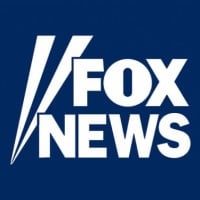
However, these were followed by more amendments to include intelligence community contractors, people who work for private companies with government security clearances. Presidential Policy Decree 19 and Intelligence Community Directive 120 outlined protected reporting channels and prohibited retaliation. President Obama made two presidential policy decrees in reaction to intelligence community whistleblowers during his tenure. Whistleblowers in this category are not revealing classified information, and their biggest incentive for using these channels is legal protection from termination or other retaliation because of blowing the whistle. Most government whistleblowers fall under the WPA and WPEA, and they can disclose to several protected channels: a supervisor, Congress, a federal agency called the Office of Special Counsel, advocacy groups, or the press. It was ICIG Michael Atkinson who found Trump’s whistleblower complaint to be “credible” and of “urgent concern” in a notification letter to Acting Director of National Intelligence Joseph Maguire. The Intelligence Community Whistleblower Protection Act of 1998 was specifically crafted for intelligence officers, and created, in 2010, the Office of the Intelligence Community Inspector General. Examples of these document leaks ranged from highly classified military intelligence to embarrassing candid diplomatic cables.Īnyone who comes forward to reveal wrongdoing, abuse of power, or corruption is a whistleblower, but when that whistleblowing happens within the government there are several protected channels to report this abuse created by the Whistleblower Protection Act of 1989 (WPA) and the Whistleblower Protection Enhancement Act of 2012 (WPEA). None of those cases involved double agents or wartime security concerns, but instead leaking secure documents.

Only 13 people have been charged under the Espionage Act, but eight of these cases occurred during President Barack Obama’s two terms. “Under the Obama administration was a complete misuse of the Espionage Act to target whistleblowers and to create an example of these individuals who came forward to blow the whistle on really serious intelligence community abuses of power,” says Liz Hempowicz, director of public policy at the Project on Government Oversight. President Obama, a constitutional-law scholar, weaponized the Espionage Act against whistleblowers like no administration before. While there are protected avenues for sharing concerns about government wrongdoing and abuse, seeking any outside channel for sharing secret information leaves a whistleblower vulnerable to being charged under the Espionage Act of 1917, which was written to prosecute spies against the United States during wartime. While this administration has acted in unprecedented ways, ignoring the norms set before them, the accusations of treason are merely a Trumpian escalation of President Barack Obama’s war on whistleblowers. But Trump’s is not the first administration to interpret intelligence community whistleblowers in this way. The president and his defenders consistently conflate the definitions of whistleblowing and spying, clouding the difference between shedding light on wrongdoing and betraying the country. The original complaint has since been bolstered by a second whistleblower, represented by the same legal team, adding to the United States’ complex relationship with government whistleblowers. He escalated to demanding to know their identity, so they could be investigated-or dealt with the way spies used to be dealt with, as he said at a press conference at the United Nations. Trump immediately called the whistleblower “ highly partisan” while questioning their intentions for coming forward.



#Obama espionage act journalists pro
House Democrats are moving quickly on the impeachment probe after a whistleblower exposed the president’s July phone call with the Ukrainian president.Īn intelligence community whistleblower’s complaint pushed House Democrats into an impeachment inquiry last month, after revealing an improper quid pro quo exchange between President Donald Trump and President Volodymyr Zelensky of Ukraine.


 0 kommentar(er)
0 kommentar(er)
